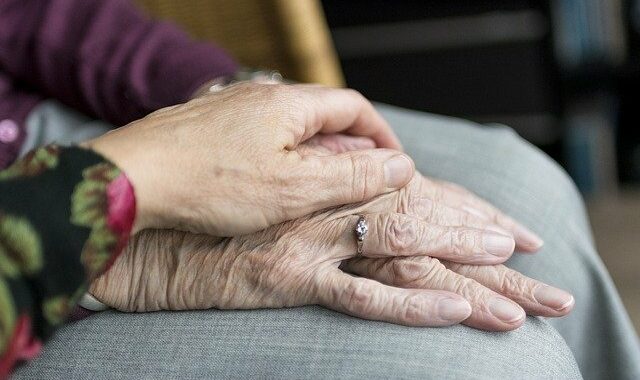The following article by Lin Law was published in the October 2020 issue of the Elder Law & Special Needs Journal of Wisconsin.
In re the Estate of David F. Oaks: ‘Gifts Causa Mortis’ Explained
This recent court of appeals case concerns the doctrine of “gift causa mortis,” a gift made in contemplation of the donor’s imminent death. Gift casua mortis, BLACK’S LAW DICTIONARY (11th ed. 2019). This doctrine operates as an exception to the general rule that testamentary dispositions must comply with the statutory requirements for a valid will. In re the Estate of David F. Oaks, ¶ 13 (citing Meegan v. Netzer, 2012 WI App. 20, 339 Wis. 2d 460, 810 N.W.2d 358). A gift causa mortis becomes effective upon the donor’s death if the following elements are satisfied:
- the donor had an intention to make [the] gift effective at death;
- the donor made the gift with a view to the donor’s death from present illness or from an external and apprehended peril;
- the donor died of that ailment or peril; and
- there was a delivery of the gifted property.
Id. (citation and internal quotation omitted).
Shortly prior to his death by suicide, the decedent, David Oaks, wrote a note bequeathing all of his “worldly belongings” to his significant other, Lynne Stouff, with whom he had lived for the last 10 years. The note read as follows: “Lynne Stouff has been my companion and my crutch for a long while. As I leave this existence I want all worldly belongings to be assigned to Lynne.” Oaks died intestate, with one estranged child from a prior relationship. His daughter, Cheri Wardell, filed a petition for formal administration of the estate, and was named personal representative. Stouff filed a claim against the Estate, contending she was entitled to the entirety of Oaks’s assets under the doctrine of gift causa mortis. The Estate denied Stouff’s claim on the basis that a gift causa mortis cannot occur when the donor commits suicide, and that Oaks had failed to deliver the gifted property to Stouff. The circuit court, however, rejected the Estate’s arguments and granted Stouff’s motion for summary judgment. On appeal, the court of appeals affirmed the circuit court.
The court of appeals held that a gift causa mortis made in contemplation of the donor’s suicide is not per se invalid. Id. ¶17. Rather, the beneficiary may show that the donor made the gift in anticipation of his or her death from a “present mental illness.” Id. This issue being a question of first impression, the court of appeals cited case law from other jurisdictions finding that an effective gift causa mortis may occur in the context of suicide as the result of the donor’s present mental illness. Id. ¶¶ 23 – 25 (citing In re Van Warner’s Estate, 238 N.W. 210 (Mich. 1931); Scherer v. Hyland, 380 A.2d 698 (N.J. 1977)). In this case, the decedent had a well-documented history of depression, which was found to have resulted in his death by suicide. Id. ¶ 28. In ruling in Stouff’s favor, the court of appeals noted that proof of a donor’s death by suicide would not be sufficient to satisfy the second and third elements of a gift causa mortis in all cases, and that the issue of whether the donor’s death was caused by his or her present mental illness would generally be a question of fact. Id. ¶ 30.
Second, the court of appeals held that Oaks completed delivery of his possessions to Stouff prior to his death because she was the legal owner of the home that she and Oaks shared, which held all of Oaks’ tangible personal property, and Stouff had access to “indicia of ownership” for the remainder of Oaks’ possessions, including keys to his vehicles, checkbooks, and bank account information. Id. ¶ 38. Although physical delivery may be necessary in some circumstances, Wisconsin case law provides that the required form of delivery will vary depending upon the nature of gifted assets and the situation of the involved parties. Id. ¶ 32 (quoting Sorenson v. Friedmann, 34 Wis. 2d 46, 55, 148 N.W.2d 745 (1967)). Where the parties are members of the same household, as in this case, the donor’s declaration of his or her donative intent, followed by the donor treating the gifted asset as the donee’s property, will generally be sufficient to effectuate delivery. Id. ¶ 37 (citing Potts v. Garionis, 127 Wis. 2d 47, 377 N.W.2d 204 (Ct. App. 1985); Horn v. Horn, 152 Wis. 482, 140 N.W. 58 (1913)). Based on these holdings, the court of appeals affirmed the circuit court’s grant of summary judgment in Stouff’s favor.
One question that Oaks left unanswered is whether a valid gift causa mortis is capable of overriding a preexisting testamentary disposition. With regard to a decedent who has an existing will, the answer is most likely “no,” unless the gift causa mortis involves a writing sufficient to supplement or revoke the decedent’s existing will. See Wis. Stat. § 853.11. The question remains, however, for intestate decedents who have utilized alternative methods of testamentary disposition.
In this case, the doctrine of gift causa mortis resulted in the decedent’s intended beneficiary receiving the entirety of his estate, despite Oaks’ failure to execute a will. The doctrine should not, of course, be seen as a method of bypassing the usual testamentary formalities, particularly in light of its narrow application. It is, however, an issue for practitioners to remain aware of when representing interested parties in an estate administration.








